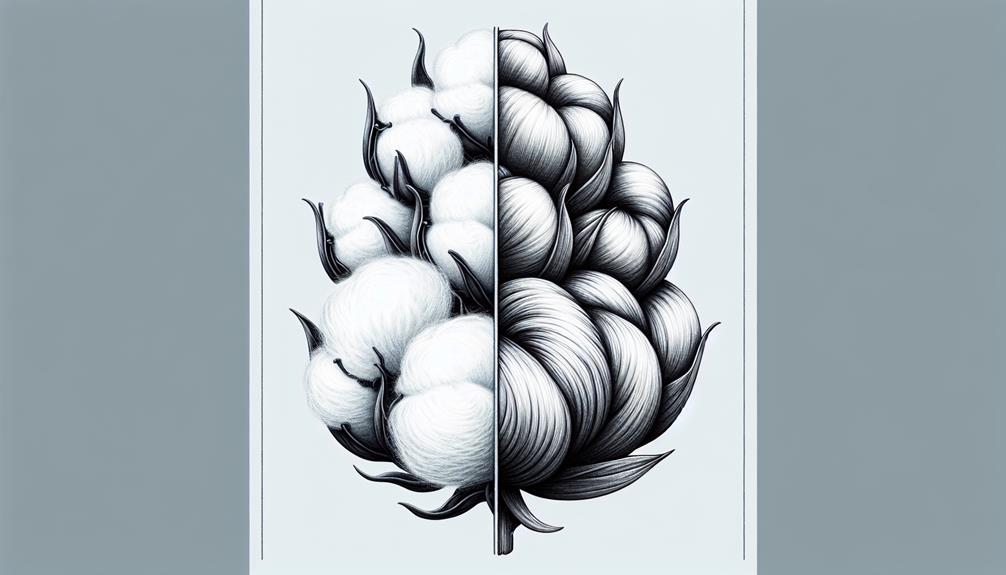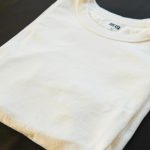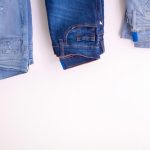You might be thinking, 'Isn't cotton just cotton?' Well, not quite. When it comes to Pima and Supima cotton, there are subtle yet significant differences that can greatly impact the quality of your clothing and linens.
From their origins to the way they are grown and processed, each type of cotton has its own unique characteristics. But what sets them apart regarding fiber length, strength, and consumer perception?
Let's explore the intriguing world of Pima versus Supima cotton to unravel the mystery behind these luxurious fabrics.
Table of Contents
Key Takeaways
- Pima cotton has longer staple length, while Supima undergoes strict quality control for strong fibers.
- Supima offers tighter weaves due to advanced spinning technology.
- Supima commands a higher price for its superior attributes and growing global demand.
- Both types face sustainability concerns due to high water usage, reflecting consumer trends and market prices.
Origins of Pima and Supima
Pima and Supima cotton, two highly sought-after varieties, have distinct origins that contribute to their unique qualities. Pima cotton, also known as extra-long staple (ELS) cotton, has historical significance tracing back to the early 1900s when it was first cultivated in the Pima County of Arizona. This cotton variant gained popularity due to its exceptional softness, durability, and absorbency.
On the other hand, Supima cotton, a superior type of Pima cotton, is exclusively grown in the United States using strict cultivation methods to guarantee premium quality. The economic impact of Pima and Supima cotton is substantial, with these luxury fibers commanding higher prices in the market due to their superior characteristics.
The demand for these cotton varieties has been steadily increasing, especially in the high-end textile industry where quality is paramount. Market trends show a growing preference for Pima and Supima cotton products, reflecting consumers' appreciation for their exceptional properties.
Fiber Length and Strength
Let's talk about the backbone of cotton textiles – fiber length and strength.
Pima and Supima cotton are known for their exceptional quality in these aspects.
Understanding the differences in these characteristics can shed light on why one may choose Pima over Supima or vice versa.
Pima Vs Supima Strength
When comparing Pima and Supima cotton's strength, it's essential to take into account both fiber length and durability. Here are four key aspects to contemplate in the strength comparison of these premium cotton varieties:
- Fiber Length: Pima cotton generally has a longer staple length compared to Supima cotton, which can contribute to increased strength and durability.
- Durability Factors: Supima cotton undergoes stringent quality control measures, ensuring that only the finest, strongest fibers are used in production.
- Weaving Techniques: The weaving techniques employed with Supima cotton often lead to tighter weaves, enhancing the fabric's strength.
- Fabric Quality: Both Pima and Supima cotton are known for their high-quality fabric, but Supima's superior fiber quality can result in a more durable end product.
Understanding these factors can help in making an informed choice between Pima and Supima cotton for various applications.
Fiber Length Comparison
Comparing the fiber length of Pima and Supima cotton sheds light on their inherent strength and durability characteristics. Fiber quality is an important aspect in determining the sustainability and performance of cotton textiles. Pima cotton, known for its extra-long staple fibers, boasts excellent strength, making it a preferred choice in the textile industry.
On the other hand, Supima cotton, a superior variety of Pima, is renowned for its even longer fibers, further enhancing its durability and quality. The innovation in developing longer staple fibers has greatly impacted the textile industry, allowing for the creation of high-quality fabrics that stand the test of time.
Understanding the relationship between fiber length and strength is essential for producing sustainable and long-lasting cotton products.
Growing Conditions and Regions
I'll now introduce the growing conditions and regions of Pima and Supima cotton.
We'll explore how climate and soil play vital roles in cultivating these premium cotton varieties.
Understanding the geographic differences will shed light on what makes these cotton types unique.
Climate and Soil
Pima and Supima cotton thrive in distinct climates and soil conditions, influencing the regions where they're grown. Here's how these factors impact the cultivation of these premium cotton varieties:
- Climate Variations
- Pima: Requires a warm climate with moderate rainfall.
- Supima: Thrives in hot and arid conditions with low humidity.
- Soil Quality
- Pima: Flourishes in deep, well-drained soils with good fertility.
- Supima: Does best in sandy loam soils with excellent drainage and aeration.
Understanding these differences in climate and soil preferences is essential for successful cultivation of Pima and Supima cotton, ensuring high-quality fiber production.
Geographic Cultivation Differences
In the diverse world of cotton cultivation, geographic differences play an important role in determining the growing conditions and regions for these premium varieties. Cultivation methods vary between Pima and Supima cotton due to climate variations.
Pima cotton, often grown in the southwestern United States and other regions with similar conditions, thrives in warm climates with low humidity. On the other hand, Supima cotton, primarily cultivated in the western United States, benefits from long growing seasons in regions with low rainfall.
These differing climates impact the sustainability of cultivation practices and the yield potential of each variety. Understanding these geographic nuances is essential for maximizing the quality and quantity of Pima and Supima cotton crops.
Manufacturing Processes
The manufacturing processes for Pima and Supima cotton involve distinct methods to guarantee the quality and durability of the final products. As a consumer looking for high-quality cotton products, understanding these manufacturing differences can make a significant impact on the quality of your purchase.
Here are some key points to take into account:
- Long Staple Fiber Selection: Pima cotton undergoes a stringent selection process to make sure only the longest fibers are used, contributing to its superior strength and softness.
- Advanced Spinning Techniques: Supima cotton is spun using state-of-the-art technology, resulting in a smoother and more uniform yarn compared to traditional spinning methods.
- Quality Control Measures: Both Pima and Supima cotton undergo rigorous quality control checks throughout the manufacturing process to maintain consistency and excellence.
- Eco-Friendly Processing: Many manufacturers of Pima and Supima cotton prioritize eco-friendly processing methods, aligning with the sustainable ethos of these premium cotton varieties.
Understanding these manufacturing processes can help you appreciate the craftsmanship behind Pima and Supima cotton products and make informed choices based on your preferences for quality and durability.
Price and Accessibility
When considering high-quality cotton products like Pima and Supima varieties, one important aspect to evaluate is the affordability and availability of these premium materials. Within the quality comparison, Supima cotton often commands a higher price than traditional Pima due to its superior attributes such as longer fibers and increased strength. This price variability is reflective of market trends and consumer demand for the exceptional quality that Supima cotton offers.
Despite the higher price point of Supima cotton, its global demand continues to rise as more consumers recognize the benefits of investing in superior quality textiles. On the other hand, Pima cotton, while still considered premium, may be more accessible regarding pricing for those looking for a high-quality cotton option without the premium price tag associated with Supima. Understanding the price differences between Pima and Supima cotton can help consumers make informed decisions based on their budget and desired level of quality.
Environmental Impact
When considering Pima and Supima cotton, it's important to weigh their environmental impact.
Water usage comparisons, soil health considerations, and differences in chemical treatments all play a significant role in understanding the sustainability of these cotton varieties.
Water Usage Comparison
Comparing the water usage between Pima and Supima cotton reveals significant differences in their environmental impact.
Here are four key points to contemplate:
- Irrigation Practices: Pima cotton typically requires more water due to its longer staple length, while Supima cotton, known for its superior quality, also demands more water-intensive irrigation practices to maintain its exceptional fiber characteristics.
- Sustainability Concerns: The higher water usage associated with both Pima and Supima cotton raises concerns about sustainability, prompting the need for more efficient irrigation methods and water management strategies.
- Environmental Impact: Pima cotton's greater water needs can lead to increased strain on local water sources and ecosystems, highlighting the importance of contemplating the environmental impact of cotton cultivation.
- Water Footprint: Understanding the water footprint of Pima and Supima cotton cultivation can help consumers make informed choices to support more sustainable practices in the textile industry.
Soil Health Considerations
Considering the significant water usage disparities between Pima and Supima cotton, the impact on soil health becomes an important aspect to examine in environmental sustainability.
Soil health management is important for sustainable farming practices in cotton cultivation. Excessive water usage, as seen in Pima cotton farming, can lead to soil erosion, reduced soil fertility, and increased salinization.
In contrast, Supima cotton, with its more water-efficient production methods, promotes better soil health by conserving water resources and maintaining soil structure. Sustainable farming practices, such as crop rotation, cover cropping, and reduced tillage, play a crucial role in preserving soil health for future generations.
Chemical Treatment Differences
Chemical treatment disparaties between Pima and Supima cotton greatly impact the environmental sustainability of cotton cultivation. When comparing the two, here are four key points to contemplate:
- Organic farming: Pima cotton tends to be produced using more organic farming methods, reducing the reliance on synthetic chemicals.
- Eco-friendly production: Supima cotton often involves eco-friendly production processes, which lessen the environmental footprint of cotton cultivation.
- Chemical-free alternatives: Pima cotton farmers are increasingly exploring chemical-free alternatives for pest and weed control, promoting sustainability practices.
- Sustainability practices: Both Pima and Supima cotton producers are adopting sustainable practices to minimize chemical usage and preserve the ecosystem for future generations.
Labeling and Certification
When it comes to labeling and certification, understanding the differences between Pima and Supima cotton is essential for making informed choices. Certification requirements play a vital role in distinguishing between these two premium cotton types.
Supima cotton, known for its superior quality, must meet strict certification standards set by the Supima Association. These standards make sure that the cotton is exclusively grown in the United States and meets specific fiber length and strength criteria.
On the other hand, Pima cotton, while also high-quality, doesn't have the same rigorous certification process. Labeling guidelines further aid consumers in identifying the type of cotton used in products. Look for the Supima® trademark on labels to make certain you're purchasing authentic Supima cotton products.
Understanding certification requirements and labeling guidelines empowers consumers to make educated choices when selecting between Pima and Supima cotton products.
Consumer Perception and Demand
Consumer perception and demand for Pima and Supima cotton vary based on their unique qualities and benefits. When it comes to consumer preferences and market trends, here are four key points worth noting:
- Perceived Quality: Consumers often associate Supima cotton with higher quality due to its extra-long staple fibers, known for producing durable and luxurious fabrics. This perception drives demand for products made from Supima cotton.
- Comfort and Softness: Both Pima and Supima cotton are prized for their softness and comfort, but Supima cotton is particularly favored for its exceptional smoothness, making it a sought-after choice in premium apparel.
- Sustainability: With increasing awareness about sustainability, there's a growing demand for organic and sustainably sourced materials like Supima cotton, which is known for its environmentally friendly cultivation practices.
- Fashion Trends: As fashion trends evolve, the demand for Pima and Supima cotton fluctuates. Designers and brands often capitalize on the popularity of these cotton varieties to cater to changing consumer preferences in the market.
Best Uses for Pima and Supima Cotton
Pima and Supima cotton offer distinct advantages in various applications, making them ideal choices for different uses in the textile industry. When it comes to colorfastness comparison and durability studies, Supima cotton excels due to its longer fibers, which result in stronger and more resilient fabrics. This makes Supima cotton a top choice for items that undergo frequent washing or require long-lasting colors.
On the other hand, Pima cotton is preferred for its luxurious feel and softness. In weave preferences and fabric feel testing, Pima cotton shines, offering a smooth texture that feels gentle against the skin. This makes Pima cotton a popular choice for high-end bedding, luxurious clothing items, and premium towels where comfort is paramount.
Understanding the strengths of each cotton variant allows for strategic selection based on the desired characteristics for the end product. Whether aiming for durability or luxurious comfort, Pima and Supima cotton cater to different needs in the textile industry.
Care and Maintenance Tips
To guarantee the longevity and quality of your Pima or Supima cotton products, it's essential to follow proper care and maintenance guidelines. Here are some tips to make certain your cotton items stay in top condition:
- Washing techniques: Always wash your Pima or Supima cotton items in cold water to prevent shrinkage and maintain color vibrancy. Use a gentle detergent to protect the fibers.
- Drying methods: Air-drying is the best method for these delicate cotton fabrics. If using a dryer, opt for a low heat setting to avoid damaging the fibers.
- Stain removal: Treat stains promptly with a mild stain remover or a mixture of water and white vinegar. Avoid using harsh chemicals that can degrade the cotton.
- Fabric softeners: While fabric softeners may seem like a good idea, they can actually reduce the absorbency of Pima and Supima cotton. Opt for dryer balls or wool dryer balls to naturally soften your fabrics.
Frequently Asked Questions
Are There Any Differences in the Feel or Texture of Clothing Made From Pima and Supima Cotton?
When it comes to clothing made from Pima and Supima cotton, the feel and texture are noticeably different. Pima offers a softer touch, while Supima boasts a luxurious blend quality resulting in a smoother, more durable fabric.
Can Pima and Supima Cotton Be Blended With Other Fabrics, and if So, How Does This Affect Their Quality?
Blending options exist for Pima and Supima cotton, impacting quality differently. Mixing with synthetic fibers can enhance durability but may compromise softness. Balancing the ratio is key to maintaining the luxurious feel these premium cottons offer.
Is There a Noticeable Difference in Color Retention Between Pima and Supima Cotton Garments?
Yes, there's a noticeable difference in color retention between pima and supima cotton garments. Pima cotton tends to have superior color fastness, making it a great choice for long-lasting, vibrant clothing. Its durability, softness, and breathability are unmatched.
Are There Any Specific Care Instructions or Considerations for Pima and Supima Cotton Compared to Regular Cotton?
Taking care of Pima and Supima cotton involves gentle washing in cold water, avoiding harsh detergents, and air-drying to maintain their softness. Consider their durability; these premium cotton varieties can last longer with proper care compared to regular cotton garments.
How Do the Environmental Impacts of Pima and Supima Cotton Production Compare to Other Types of Cotton?
When comparing pima and supima cotton to other types, their water consumption and pesticide use are lower, benefiting soil health and biodiversity. Their cultivation practices promote sustainability, making them more environmentally friendly choices.
- Does Chiffon Fabric Stink - July 15, 2025
- Does Chiffon Fabric Affect the Economy - July 15, 2025
- Does Cotton Fabric Have a Nap - July 15, 2025







